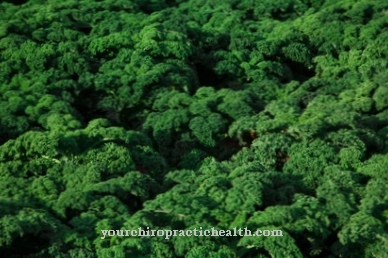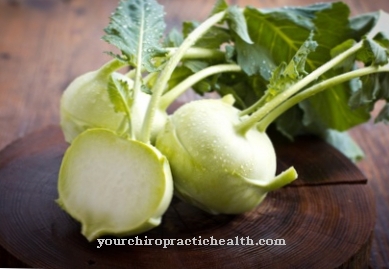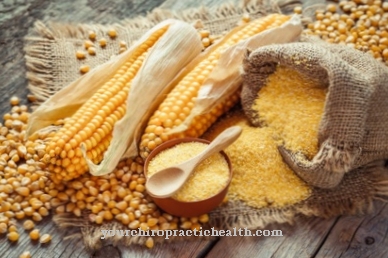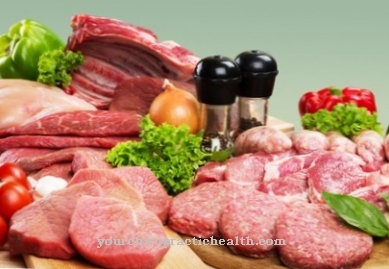The endive belongs to the plant genus of chicory and is assigned to the daisy family. It grows mainly on humus-rich soils with a medium supply of nutrients and in sunny locations. By growing it in greenhouses, the endive is now available all year round, while it can be bought outdoors in late summer.
What you should know about the endive

The endive originally comes from the entire Mediterranean region. The Arabs probably brought the vegetables to Central Europe. Nowadays, Germany, France, Italy and the Netherlands are the most important growing countries.
The endive prefers a humus-rich, medium-rich soil. It thrives particularly well in sunny locations. Ideally, sowing takes place from June to July if the endives are planted outdoors. Other vegetables or lettuce types such as cabbage, leek, fennel and runner beans are well suited as neighbors in the bed. Manure or compost should be worked into the bed a few months before sowing. It is also important to avoid waterlogging. Once the rosettes are formed, watering can be reduced to prevent rot.
Endive that are not planted until late in autumn should be protected against frost with fleece. As an alternative to the field, the endive can also be grown in a pot. In this case, planting out takes place from July to August. Endive are biennial plants, but they are only grown as a lettuce as an annual. Instead of closed heads of lettuce, the 30 to 70 centimeter tall plant forms rosettes from rather thick leaves.
There are two groups: The endive with the thick, wide, entire-margined leaves, which last longer and are best suited for storage. The second variety is the curly-leaved endive with, as the name suggests, curled leaves, which are intended for immediate consumption.
The harvest time can be from May to December, because a moderate frost does not affect the quality of the endive. If the heads of the endive are tied together a few weeks before the usual harvest, the hearts remain lighter and also have a milder taste. Instead, the green outer leaves have a higher nutrient content. The endive is consumed as a salad, but it is not related to the lettuce or lettuce, but to the chicory and radicchio. All types have a relatively high content of bitter substances, which stimulates the appetite. The endive has a slightly spicy, hearty, pleasant note.
Importance to health
The endive contains the B vitamin in a form that is very easy for the body to absorb. The bitter substance lactucopicrin, which is mainly found in the lower parts of the leaf, stimulates the flow of bile.
This means that high-fat dishes can be digested more easily and it also has a slightly diuretic effect. A slight pain-relieving and calming effect was also found from the consumption of the endive. The bitter substance lactucopicrin also stimulates the appetite. The endive is therefore ideal as a starter. The bitter substance Intybin, which has a beneficial effect on the functioning of the kidneys and blood vessels, ensures the tart taste.
The inulin it contains has a positive effect on digestion as the stool frequency is increased. The endive is also rich in carotenes. These dyes protect the body from free radicals, which can permanently damage the cells. Carotenes also strengthen the immune system, eyesight, the respiratory tract and the skin.
Ingredients & nutritional values
Endive contains many more vitamins and minerals compared to lettuce or lettuce, such as vitamins C, E, vitamins of the B group, beta-carotene, potassium, calcium and phosphorus. The antioxidant flavonoids (secondary plant substances) are also fairly well represented. The high iron and folic acid content is also worth mentioning. 100 grams of endive contain around 15 calories. The reason for this is the high water content of more than 90 percent.
Intolerances & allergies
An endive salad can contain plenty of nitrates in the winter months. In the body, this substance is partially converted into nitrosamine, which is said to have a carcinogenic effect. People who are sensitive can react to the salicylic acid, which is contained in small amounts in endive, with skin rashes. It should also be noted that the endive contains the gout-promoting purines. Excessive consumption can also lead to indigestion.
Shopping & kitchen tips
When buying endive, care should be taken to ensure that the head and lettuce leaves are firm and not withered and look juicy. Brown or even black cut surfaces make it clear that the goods are not fresh. The heart should make up one third of the total head.
The inner part should be large and light, because then it will be more tender and less bitter. If required, the leaves can be separated from the endive head and cut into strips. The rest of the head can be kept in a plastic bag in the refrigerator for around three days. The salad can be wrapped in a damp cloth and stored in the vegetable compartment.
Preparation tips
When preparing the endive, care should be taken that the leaves are washed first and then cut into small pieces. Conversely, many valuable ingredients could be lost. In Germany, endive is almost only eaten raw as a salad, while in other countries it is also very popular cooked as a healthy, delicious vegetable.
For a salad, they can be prepared with well-seasoned marinades and dressings. Depending on your needs, it is possible to neutralize the bitter taste with a little sugar, honey or sweet dressings. But it is precisely the hearty, spicy, sometimes slightly bitter taste that makes endive so popular for colorful salads of all kinds, because it gives them an interesting note. The endive can be combined well with tomatoes, cucumbers, peppers, olives, tuna and eggs, for example. Due to the bitter taste, fruits such as apples, pears and oranges as well as many types of cheese also go wonderfully.
The endives don't wilt so quickly, so they can also be used to garnish starters, meat, fish or cheese platters. Steamed with bacon, the result is a delicate vegetable that can be prepared like spinach and then served as a warm side dish. The somewhat coarse leaves become more tender when they are doused with the hot bacon. In principle, only the leaves of the endive are used. The stalk is removed before the food is prepared. Endive generally goes well with spicy ingredients such as anchovies or eggs, but also with sweet fruit.









.jpg)



.jpg)



.jpg)







.jpg)


